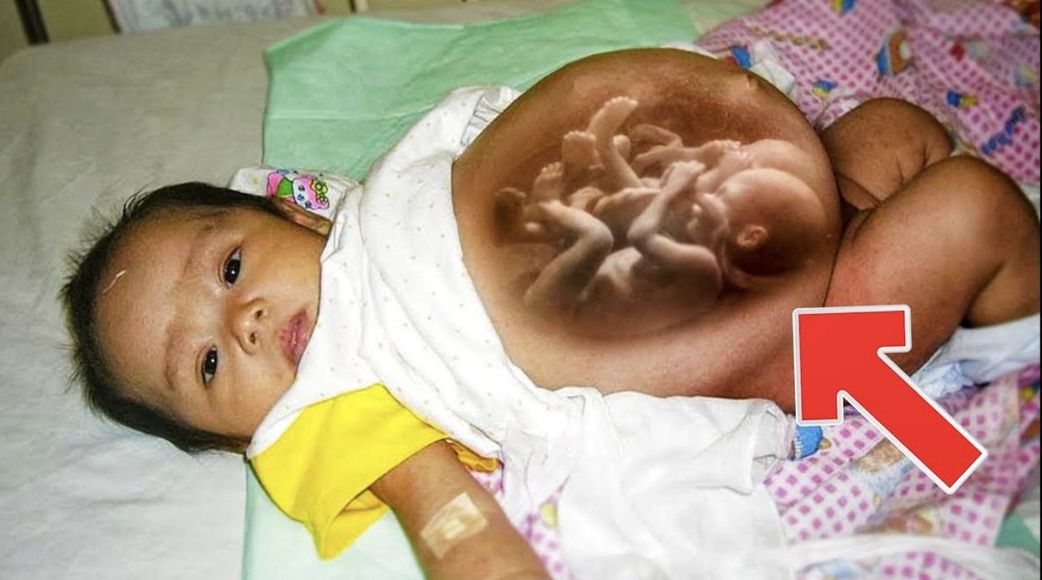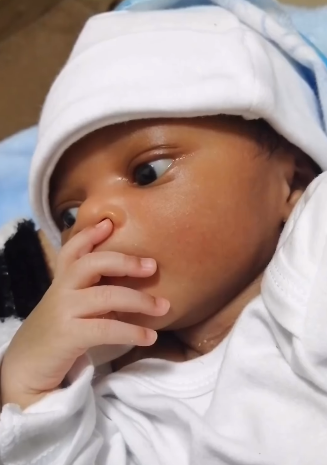In one of the most astonishing medical discoveries in modern history, a newborn baby girl in Hong Kong was found to have two developing fetuses inside her abdomen—a condition known as fetus-in-fetu.
The discovery occurred in November 2010 during what was expected to be a routine postnatal examination at Queen Elizabeth Hospital.
The medical team was stunned to find that the unusual mass in the baby’s stomach wasn’t a tumor or cyst, but two partially developed fetuses, each at around 8 to 10 weeks gestation. These fetuses had tiny arms, legs, rib cages, spines, intestines, and even umbilical cords.
What Is Fetus-in-Fetu?
Fetus-in-fetu (FIF) is an extremely rare condition, occurring in only about 200 documented cases globally. It happens when a malformed fetus becomes enveloped inside its twin during early pregnancy. Medically, it’s considered a parasitic twin, where one embryo is absorbed into the body of the other.
Typically, FIF is discovered in childhood or adolescence, often when a mass is noticed in the abdomen. However, in this rare case, the condition was detected just days after birth.
According to doctors, the girl had likely absorbed her twin siblings while in the womb, making this a case of a triplet pregnancy gone wrong, where two of the embryos ended up inside the third.
Were the Fetuses Alive?
No. While the term “pregnant baby” may make headlines, it’s medically inaccurate. The baby didn’t conceive the fetuses; instead, she absorbed them during gestation. The fetuses were around 4 cm and 5 cm in length and, despite having human features like limbs and spines, were nonviable.
The fetuses were successfully removed through surgery when the baby was just three weeks old. She made a full recovery and was discharged in stable condition. Doctors confirmed that she is expected to live a normal, healthy life.
Why Does Fetus-in-Fetu Happen?
The cause of fetus-in-fetu is still unclear. Most scientists believe it results from abnormal twinning—a malfunction during the early stages of embryonic development when one embryo becomes trapped inside the other. Some experts describe it as a conjoined twinning disorder, while others believe it could be a teratoma (a rare tumor) with fetal features.
The enclosed fetus typically has no functioning brain or heart, and relies entirely on the host’s body for nutrients, much like a parasite.
Other Documented Cases of Fetus-in-Fetu
Though rare, other similar cases have been reported globally:
-
India (1999): A two-year-old boy was found to have his twin inside him. The condition was only discovered after he complained of breathing difficulties. The parasitic twin had hair, limbs, and nails and was carried unknowingly for two years.
-
Colombia (2019): A baby girl named Itzmara was born with a parasitic twin inside her. Doctors removed it days after birth.
-
Indonesia (2009): A young boy had a 1.6 kg undeveloped fetus removed from his stomach after experiencing abdominal swelling.
In all these cases, the children survived and lived normal lives after surgery.
Can Fetus-in-Fetu Be Detected During Pregnancy?
Unfortunately, it is nearly impossible to detect during standard prenatal screenings. The anomaly is so rare and complex that most cases are discovered only after birth, when symptoms begin to show or during routine exams.
Is It Genetic?
No. Fetus-in-fetu is not hereditary and does not run in families. It’s considered a random developmental error during early pregnancy.





















